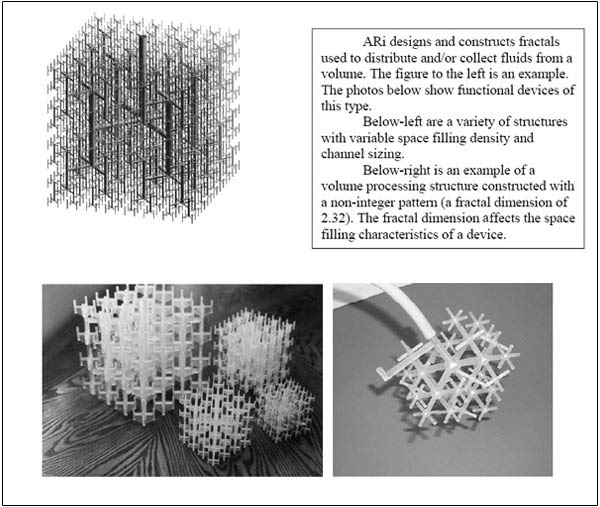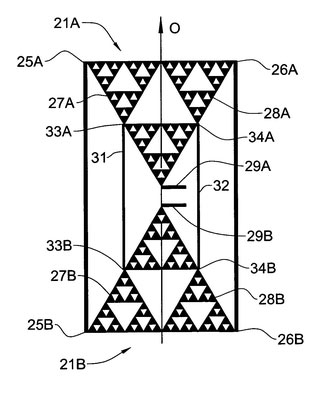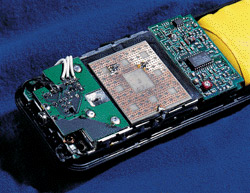Fractal Applications
Fractal DevicesEngineers are using the ideas of fractal geometry in a variety of applications. Often we are faced with a task that is similar to something that nature has already found a solution for. The idea of deriving inspiration for human designs from the natural world is called "biomimicry". Here we will examine some engineered fractals that solve the challenge of fluid transport by copying the fractal patterns of our blood vessels
and lungs.
 A fractal heat exchanger designed by Deb Pence at Oregon State University, and etched in silicon. Photo courtesy of Tanner Labs. As computers get smaller and faster, they generally produce more heat, which needs to be dissipated or else the computers will overheat and break.
The smaller they are, the more this becomes a problem. Engineers at Oregon State University have developed fractal pattern that can be etched into a silicon chip
to allow a cooling fluid (such as liquid nitroge) to uniformly flow across the surface of the chip and keep it cool. The fractal pattern above derived from our blood vessels
provides a simple low-pressure network to accomplish this task easily.
 An excerpt from a publication of Amalgamated Research Inc, showing some manufactured fractals used for fluid mixing. Image courtesy of Amalgamated Research Inc. The fractals above are developed by Amalgamated Research Inc and are licensed to industrial producers who need to mix fluids together very carefully. The standard way of mixing fluids - stirring - has some important drawbacks. First of all, it produces turbulent mixing, which is unpredictable, so two different batches may not end up identically mixed. Secondly, turbulent mixing is energy intensive and is disruptive to delicate structure. The engineered fractal fluid mixers provide a different solution to the problem of mixing. Here, there is an actual physical branching fractal network of tubes that can distribute fluid thoroughly into a chamber containing another fluid. This system provides a low-energy reproducible way of mixing chemicals. Fractal networks with different space-filling properties can be custom-made for chemical systems requiring different properties. Examples of fluid-mixers like these have been used in fields as diverse as high-precision epoxies, the manufacturing of sugar, and chromatography - used
to sample and determine small quantities of biological molecules.
Fractal patterns can also be found in commercially available antennas, produced for applications such as cellphones and wifi systems by companies such as Fractenna
in the US and Fractus in Europe. The self-similar structure of fractal antennas gives them the ability to receive and transmit over a range of frequencies, allowing
powerful antennas to be made more compact.
|
||
|
<- PREVIOUS NEXT -> © Fractal Foundation. |

